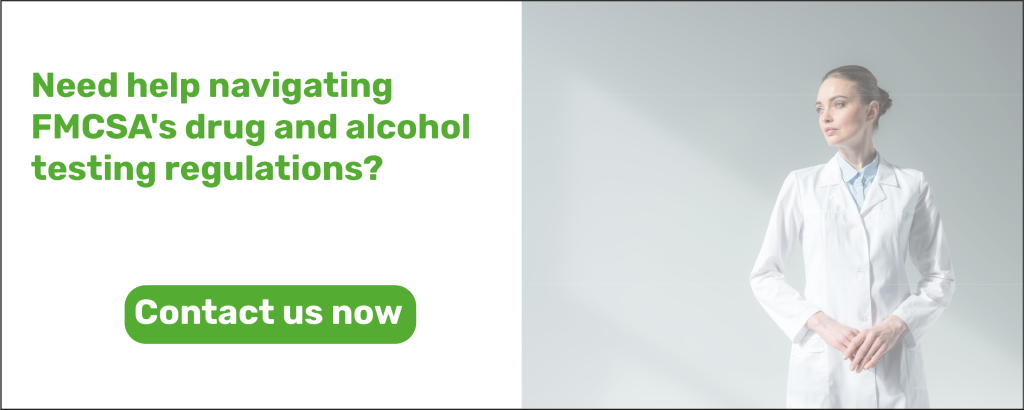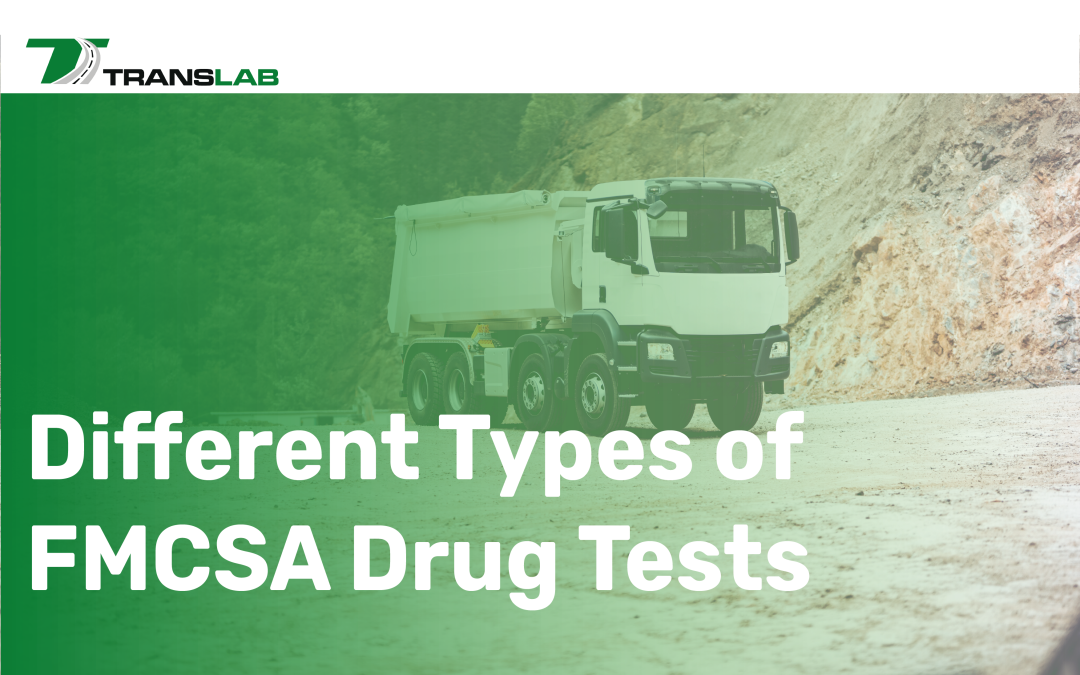The Federal Motor Carrier Safety Administration (FMCSA) sets forth stringent regulations for drug and alcohol testing to ensure the safety and reliability of commercial motor vehicle (CMV) operations. Drug and alcohol testing is crucial in maintaining road safety, preventing accidents, and ensuring CMV drivers comply with federal laws. The FMCSA mandates several drug tests, each serving a specific purpose within the regulatory framework.
Pre-Employment Testing
Before any driver can be hired, they must undergo a pre-employment drug test. This test screens for the presence of five types of drugs: marijuana, cocaine, opiates, amphetamines, and phencyclidine (PCP). A negative result is required before the driver can perform any safety-sensitive functions, ensuring that new hires are drug-free from their employment.
Random Testing
Random drug testing is a key component of the FMCSA’s strategy to deter drug use among CMV drivers. Employers are required to conduct random drug tests on at least 50% of their drivers annually. The selection process must be truly random, and all drivers must have an equal chance of being tested. This unpredictability helps to maintain a drug-free work environment and discourage substance abuse.
Post-Accident Testing
Following an accident, drivers may be required to undergo drug and alcohol testing if the incident meets specific criteria. Testing is mandatory if the accident involves a fatality if the driver receives a citation within 8 hours of the accident for a moving traffic violation arising from the accident, or if the accident results in an injury requiring immediate medical treatment away from the scene. This type of testing helps determine whether drug or alcohol use was a factor in the accident.
Reasonable Suspicion Testing
If an employer has reasonable suspicion that a driver is under the influence of drugs or alcohol while on duty, they must conduct a reasonable suspicion test. This suspicion must be based on specific, observable symptoms such as erratic behavior, slurred speech, or the smell of alcohol or drugs. Supervisors must be trained to recognize the signs of substance abuse and make informed decisions regarding testing.
Return-to-Duty Testing
Drivers who have violated the FMCSA’s drug and alcohol regulations and are seeking to return to safety-sensitive functions must undergo a return-to-duty test. This test is conducted after the driver has completed the required substance abuse program and must yield a negative result. The return-to-duty test ensures that the driver is no longer using drugs or alcohol before resuming their duties.
Follow-Up Testing
Follow-up testing is required for drivers who have returned to duty after a drug or alcohol violation. The Substance Abuse Professional (SAP) overseeing the driver’s return-to-duty process will determine the frequency and duration of follow-up testing, which can last up to five years. This rigorous testing regimen helps to ensure that the driver remains drug-free and compliant with FMCSA regulations.
The FMCSA’s comprehensive drug and alcohol testing program plays a vital role in maintaining the safety and integrity of the commercial motor vehicle industry. By implementing various types of drug tests—pre-employment, random, post-accident, reasonable suspicion, return-to-duty, and follow-up—the FMCSA aims to prevent substance abuse and ensure that CMV drivers operate their vehicles safely and responsibly. Understanding and adhering to these testing requirements is essential for employers and drivers to remain compliant with federal regulations and promote a safe driving environment for everyone on the road.


